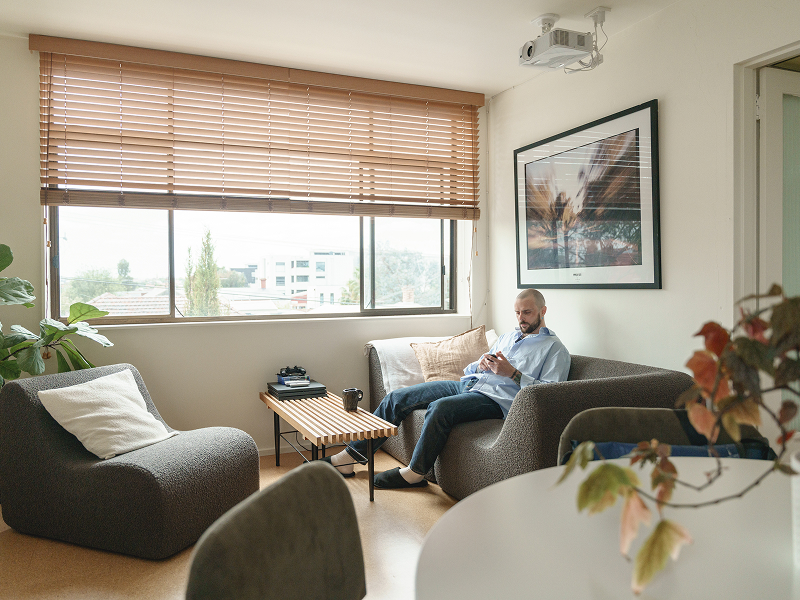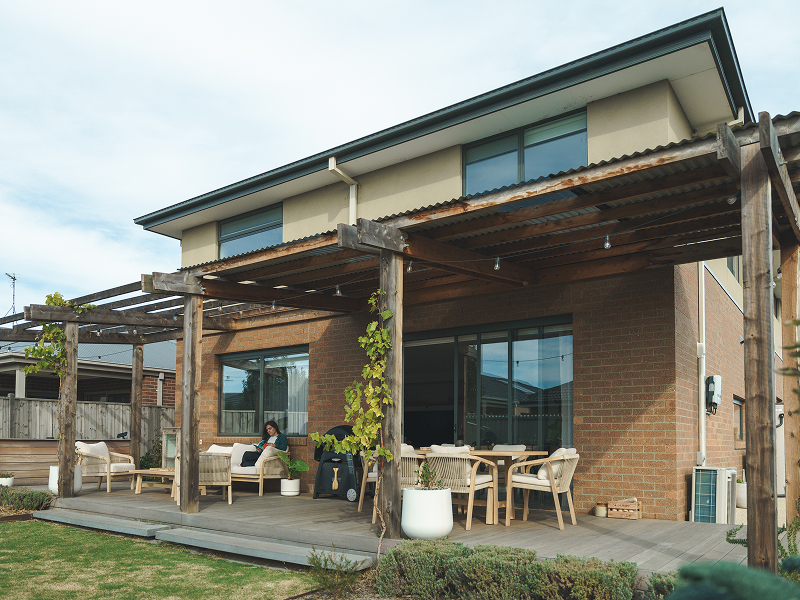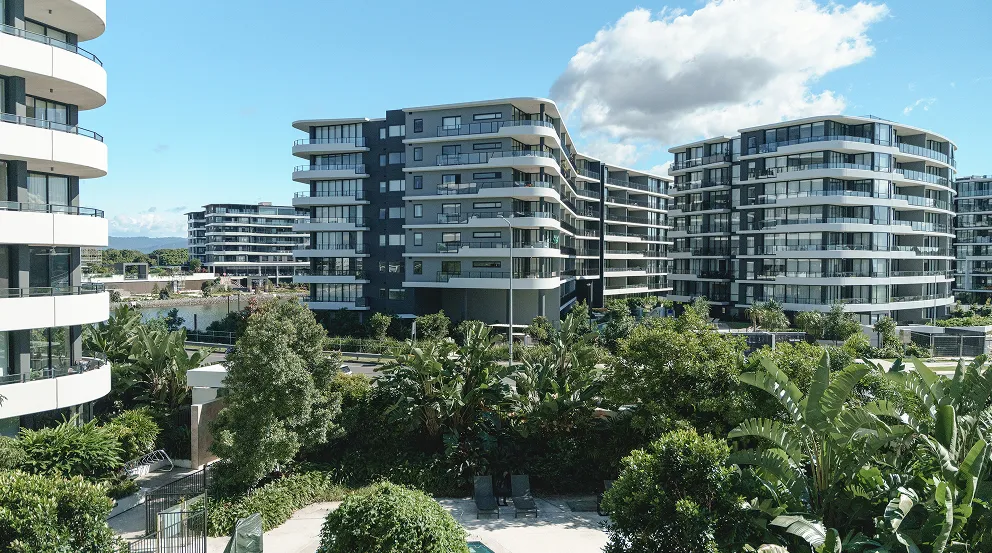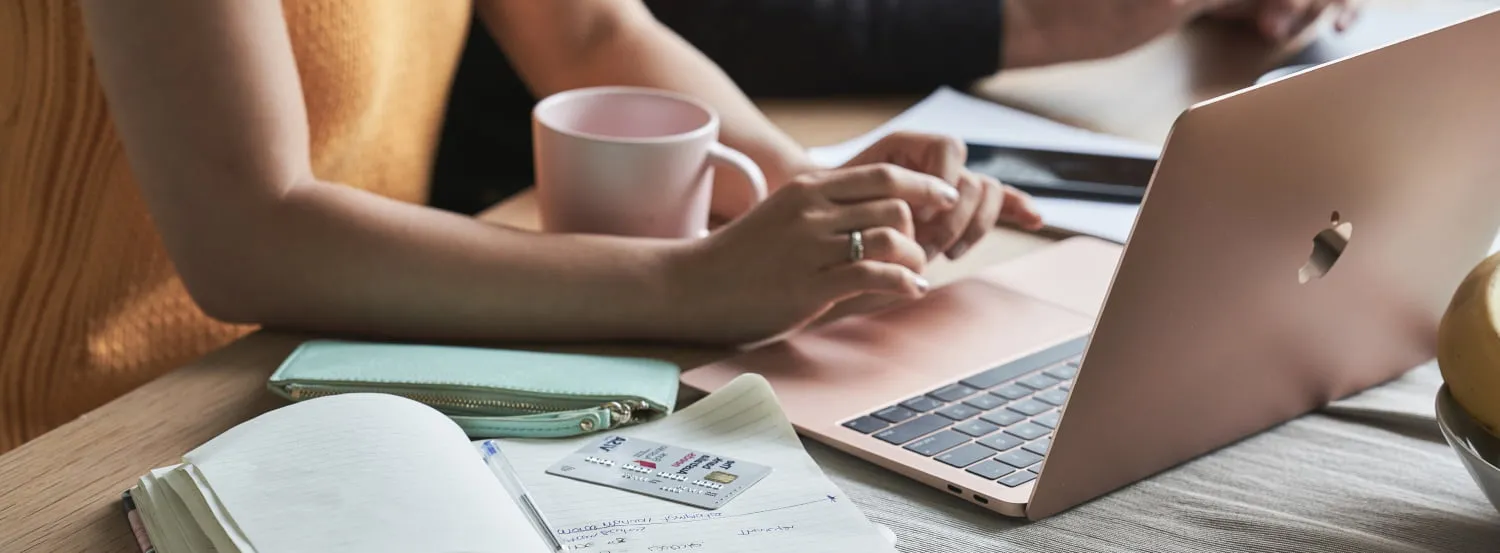The Australian Government’s new Help to Buy scheme has been announced, and Bank Australia is one of two participating lenders. Here’s how it works, and how you can get involved.
The property market has changed dramatically over the past few decades. It’s harder than ever to achieve home ownership, which has declined dramatically since peaking in 1966 (especially for young people).
Bank Australia is proud to be a Participating Lender for the pilot of the Australian Government’s new Help to Buy scheme, a shared-equity initiative designed to help more Australians own their own homes.
Help to Buy aims to lower the barrier for people looking to enter the property market. It does this by allowing eligible homebuyers to purchase a home with as little as 2% deposit, thanks to a contribution from the federal government of up to 40% of the purchasing price. This could help make buying a home significantly more affordable.
“It’s all about helping people get into the market right now,” says Tristan Zimora, Specialised Lending Manager at Bank Australia. “Depending on the purchase price, sometimes a loan repayment can actually be cheaper than rent.”

How Help to Buy works
The Help to Buy pilot program is a shared equity scheme, which means the government contributes a percentage of the property's value – up to 30% for an existing home or up to 40% for new builds – in exchange for an equal equity stake in the property. The scheme, which targets low- to middle-income earners, can significantly reduce both the amount of money you need to borrow from the banks, as well as your mortgage repayments.
Let’s break it down with an example.
“If an applicant is purchasing a home for $1 million, they’d need a minimum 2% deposit ($20,000). The government could contribute up to 40% ($400,000) and their Bank Australia loan would cover the remaining 58% ($580,000). So they can buy a home with a much smaller upfront cost.”
Importantly, the applicant remains the full legal owner of the property and the only name on the title. “The contribution from the government is a loan, however regular repayments are not required,” Tristan says. “The government will just take a second mortgage for their share.” The applicant can either repay the government’s contribution over time or when they sell the property, with the repayment amount based on the home’s value at the time.
“If the property goes up in value when you sell it, the government gets their share,” Tristan says. So if that $1 million property sells for $2 million in 20 years, and the government owns 40%, they’d get $800,000 back.”
It’s also possible to make incremental repayments from your savings to increase your equity share over time.

Who is eligible for Help to Buy?
Help to Buy is designed to replace state-based shared equity programs (like the now-retired Victorian Homebuyer Fund), with lower income thresholds and a more inclusive, national approach.
To qualify for Help to Buy you must:
- Be an Australian citizen aged 18 years or older
- Have an annual taxable income at or below $100,000 for individual applicants or $160,000 for single parents and joint applicants (as shown on your ATO Notice of Assessment for the previous financial year)
- Not currently own a property in Australia or overseas (you do not need to be a first homebuyer, but you cannot currently be a homeowner)
There are also property price caps, depending on the location, which you can check at our Help to Buy hub.
The scheme applies to both existing and new-build properties, including apartments, townhouses, units and freestanding homes. However, some lenders may apply their own restrictions based on property type or location.
The federal government has capped the scheme at 40,000 – 10,000 places per year for four years, which will be distributed across the states based on population. “It could be limited depending on demand,” Tristan says. “10,000 spots sounds like a lot, but that could be taken up pretty quickly.”

Applying for Help to Buy through Bank Australia
Bank Australia is currently one of only two banks (alongside CommBank) partnering with the government to deliver the Help to Buy pilot program.
“We have a history of being in this space,” Tristan says. “Affordable housing is one of the areas in which we want to make an impact for our customers, and this scheme supports that focus. So anytime we have an opportunity to get involved in something like this, we always put our hand up.”
The application process through Bank Australia is similar to a standard mortgage, with a few added steps to cover off the government’s involvement.
Applicants can apply through:
- Our dedicated Bank Australia Help to Buy hub, where you can check your eligibility and apply directly
- A broker, if that’s your preferred channel
As one of only two banks currently offering this initiative, Bank Australia’s lenders will also be primed to help applicants through the process. “It will be personalised,” Tristan says. “We’ve got specialised lenders who know the program and know the scheme, which will make it a better experience for our applicants.”

A commitment to helping aspiring homeowners
For prospective buyers struggling to break into the property market, Help to Buy aims to offer a realistic and immediate path to home ownership. “This way, you can get a loan with a 2% deposit and still have a mortgage that’s affordable,” Tristan says. “Without this scheme, a lot of people simply wouldn’t be able to get into the market. They’d be stuck renting or saving for years while house prices keep rising.”
If you’re thinking about applying for Help to Buy, it’s important to consider your own circumstances. “Everyone will have to weigh up their situation and understand the pros and cons,” Tristan says. “Through Help to Buy, the government will own a stake in your property, but overall, it provides another avenue and opportunity to get in and own a home.”
To learn more or check your eligibility, visit our Help to Buy hub.








